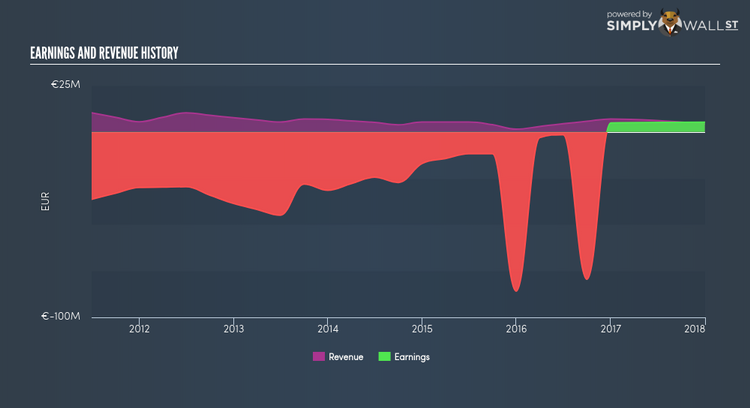Urbas Grupo Financiero SA. (BME:UBS): What Does It Mean For Your Portfolio?

For Urbas Grupo Financiero SA.’s (BME:UBS) shareholders, and also potential investors in the stock, understanding how the stock’s risk and return characteristics can impact your portfolio is important. The beta measures UBS’s exposure to the wider market risk, which reflects changes in economic and political factors. Not every stock is exposed to the same level of market risk, and the market as a whole represents a beta value of one. A stock with a beta greater than one is expected to exhibit higher volatility resulting from market-wide shocks compared to one with a beta below one.
Check out our latest analysis for Urbas Grupo Financiero
What is UBS’s market risk?
With a beta of 2.88, Urbas Grupo Financiero is a stock that tends to experience more gains than the market during a growth phase and also a bigger reduction in value compared to the market during a broad downturn. Based on this beta value, UBS will help diversify your portfolio, if it currently comprises of low-beta stocks. This will be beneficial for portfolio returns, in particular, when current market sentiment is positive.
How does UBS’s size and industry impact its risk?
UBS, with its market capitalisation of €343.74M, is a small-cap stock, which generally have higher beta than similar companies of larger size. In addition to size, UBS also operates in the real estate industry, which has commonly demonstrated strong reactions to market-wide shocks. So, investors should expect a larger beta for smaller companies operating in a cyclical industry in contrast with lower beta for larger firms in a more defensive industry. This supports our interpretation of UBS’s beta value discussed above. Next, we will examine the fundamental factors which can cause cyclicality in the stock.
Is UBS’s cost structure indicative of a high beta?
During times of economic downturn, low demand may cause companies to readjust production of their goods and services. It is more difficult for companies to lower their cost, if the majority of these costs are generated by fixed assets. Therefore, this is a type of risk which is associated with higher beta. I examine UBS’s ratio of fixed assets to total assets to see whether the company is highly exposed to the risk of this type of constraint. With a fixed-assets-to-total-assets ratio of greater than 30%, UBS appears to be a company that invests a large amount of capital in assets that are hard to scale down on short-notice. As a result, this aspect of UBS indicates a higher beta than a similar size company with a lower portion of fixed assets on their balance sheet. Similarly, UBS’s beta value conveys the same message.
What this means for you:
You may reap the gains of UBS’s returns in times of an economic boom. Though the business does have higher fixed cost than what is considered safe, during times of growth, consumer demand may be high enough to not warrant immediate concerns. However, during a downturn, a more defensive stock can cushion the impact of this risk. What I have not mentioned in my article here are important company-specific fundamentals such as Urbas Grupo Financiero’s financial health and performance track record. I highly recommend you to complete your research by taking a look at the following:
Financial Health: Is UBS’s operations financially sustainable? Balance sheets can be hard to analyze, which is why we’ve done it for you. Check out our financial health checks here.
Past Track Record: Has UBS been consistently performing well irrespective of the ups and downs in the market? Go into more detail in the past performance analysis and take a look at the free visual representations of UBS’s historicals for more clarity.
Other High-Performing Stocks: Are there other stocks that provide better prospects with proven track records? Explore our free list of these great stocks here.
To help readers see pass the short term volatility of the financial market, we aim to bring you a long-term focused research analysis purely driven by fundamental data. Note that our analysis does not factor in the latest price sensitive company announcements.
The author is an independent contributor and at the time of publication had no position in the stocks mentioned.

